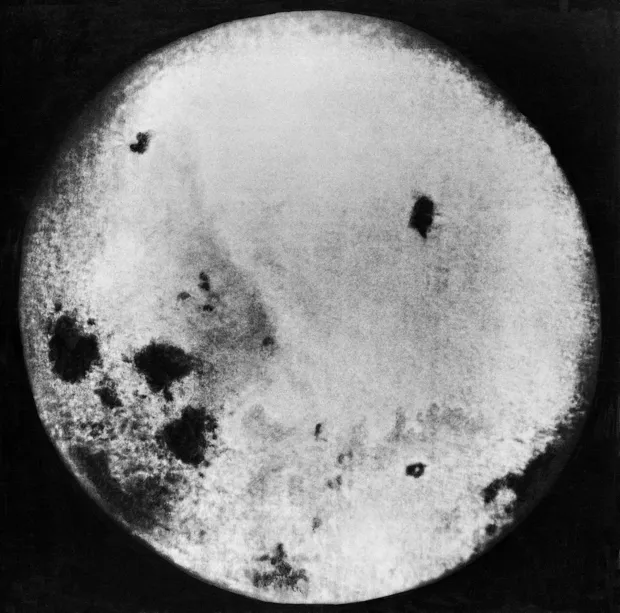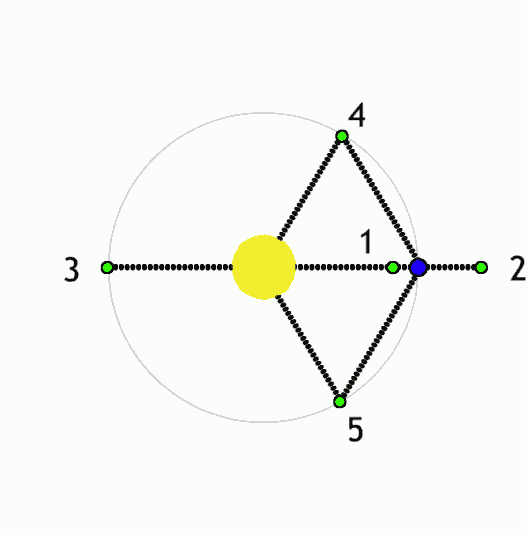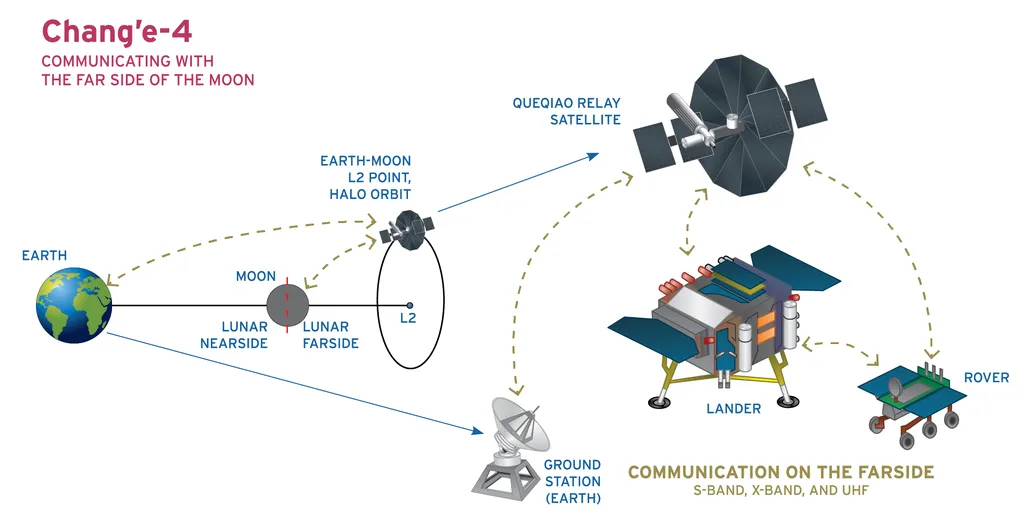On 3 January, the China National Space Administration (CNSA) landed a spacecraft, known as Chang’e 4, on the surface of the far side of the Moon: a feat no other space agency has even attempted. Now, Chang’e’s pet rover Yutu 2 has rolled into action on the surface, ready to probe the Moon’s geology. Chang’e 4 and Yutu 2 will have a wealth of data to return to Earth, and they’ll do this by taking advantage of a phenomenon known as Lagrange points.
Since the Moon always shows us the same face, Chang’e 4, named for the Chinese goddess of the Moon, will never be able to send us a message directly. The spacecraft communicates using radio waves, the standard choice for transmissions involving satellites, mobile phones, TV, and, of course, radio. Radio waves are low-energy, long-wavelength electromagnetic waves, which means they are perfect for long-distance communications, especially when there’s a line-of-sight connection between the transmitter and the receiver, but less good at penetrating rock.
The Moon, being a large lump of rock, does an excellent job of getting in the way of Chang’e 4’s transmissions. To get around this problem, CNSA launched a satellite in May 2018 into an orbit beyond the Moon to act as a relay.

The lunar messenger is named Queqiao, meaning ‘Magpie Bridge’, from a story in Chinese mythology in which a bridge of magpies allows a pair of lovers to reunite. Much like its namesake, the satellite’s job is to establish a connection between Earth and the far side of the Moon. Sitting in orbit around a point in spaceknown as L2, 60,000 kilometres beyond the Moon, Queqiao splits the journey up into two line-of-sight paths.
This is where Lagrange points come in. Whenever a small object orbits a larger one, like the Moon around the Earth, there are five points where the gravitational forces are finely tuned. At any one of these points, labelled L1 to L5, a third object can orbit at the exact same speed as the smaller object. Anywhere else, the uneven pull of gravity will disrupt its orbit.

Imagine drawing a line joining the Earth to the Moon. Now, following that line out beyond the Moon, you reach the point known as L2. If you orbit the Earth from this point, the extra boost of gravity from the Moon gives you the energy you need to orbit the Earth at exactly the same speed as the Moon. From the Earth’s perspective, you will always be behind the Moon, and from the Moon, you will always appear in the same place in the sky.
Queqiao could park itself at L2 and be in line of sight of Chang’e 4, down on the lunar surface, though it would have no line-of-sight connection to the Earth. Instead, the satellite orbits L2 at a distance, staying constantly in view of both the spacecraft and Earth.

The idea of placing a communications satellite at the Earth-Moon L2 point is not new. In the late 1960s, NASA’s mission design specialist Robert W Farquhar floated the idea for an Apollo mission to the far side of the Moon, but since the far side was still such a foreign place, and much more difficult to contact, NASA instead chose sites on the near side of the Moon for all Apollo landings. However, they didn’t shelve the idea of using Lagrange points entirely. The L2 point of the Sun-Earth system, which sits 1.5 million kilometres from the Earth, has been home to the Wilkinson Microwave Anisotropy Probe and the Herschel Space Observatory, among others. The James Webb Space Telescope is due to make its home at L2 following its launch in 2021, and L1 hosts the Deep Space Climate Observatory, DSCOVR.
Chang’e 4 and Yutu 2 aim to study the far surface in detail, including searching for water in its soil. There is even the possibility of a future Chinese manned mission to explore the far side from close up. All the while, like the lovers from Chinese mythology, the Magpie Bridge will be reuniting communications from the lander on the Moon and us here on Earth.
Follow Science Focus onTwitter,Facebook, Instagramand Flipboard
